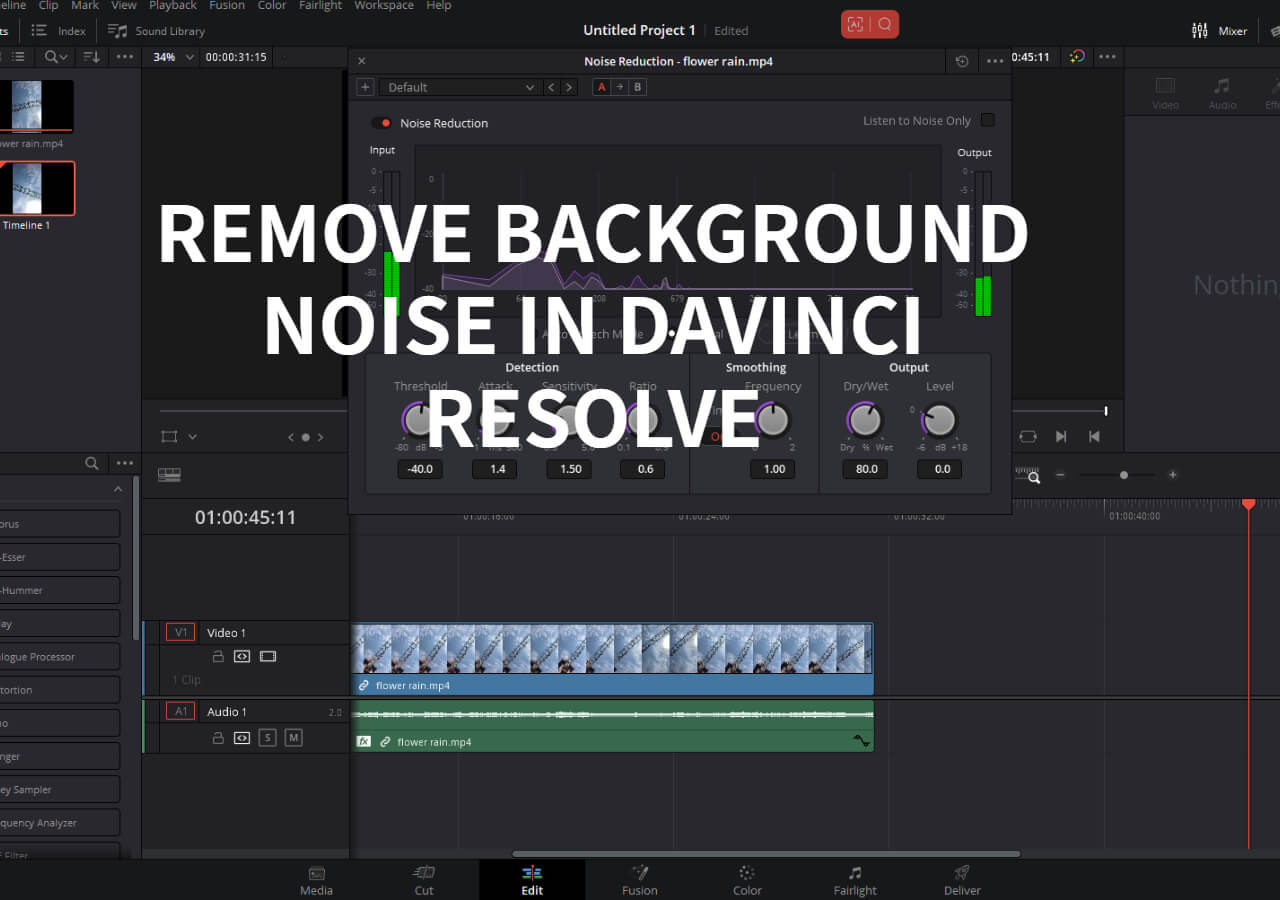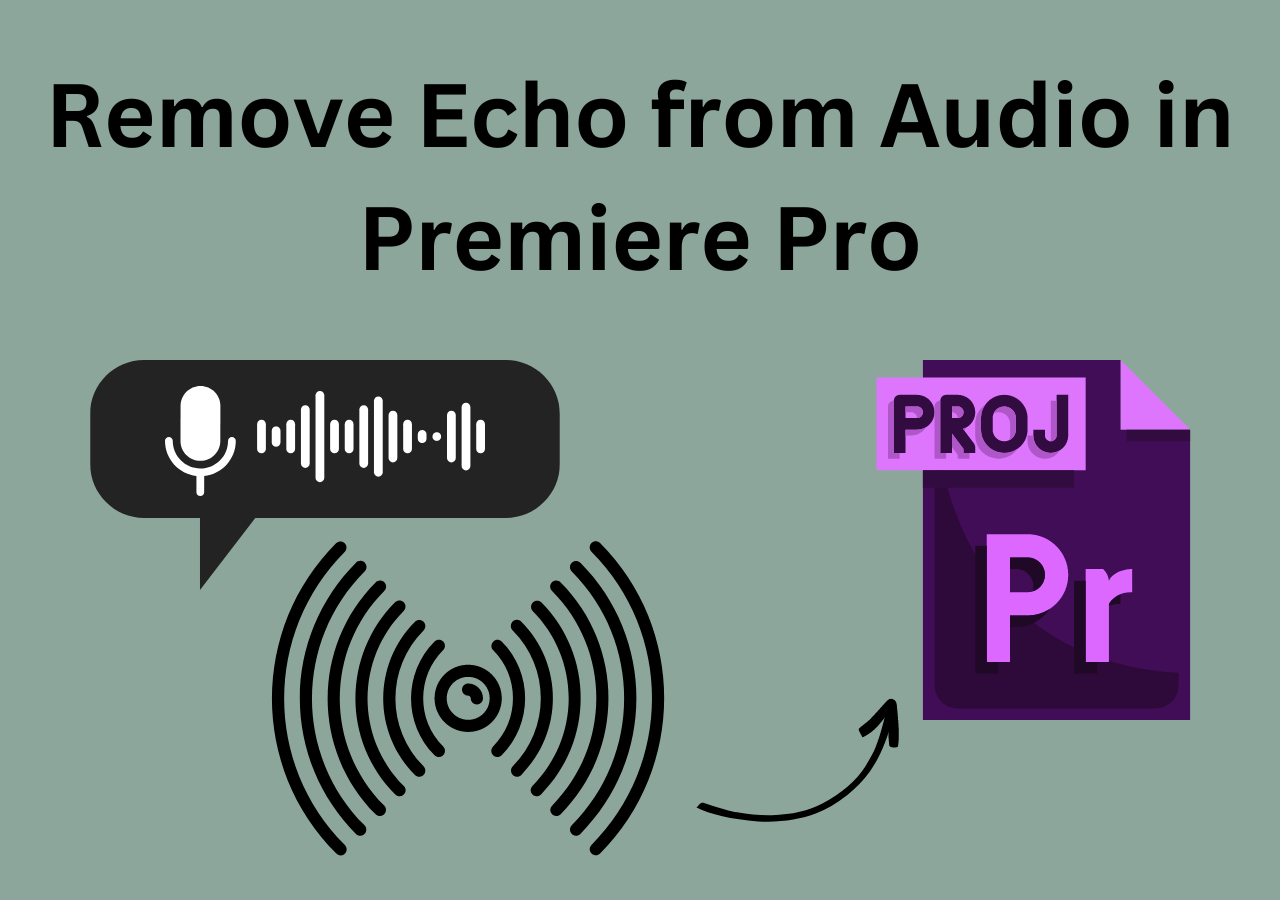-
![]()
Sofia Albert
Sofia has been involved with tech ever since she joined the EaseUS editor team in March 2011 and now she is a senior website editor. She is good at solving various issues, such as video downloading and recording.…Read full bio -
![]()
Alin
Alin is a sophisticated editor for EaseUS in tech blog writing. She is proficient in writing articles related to screen recording, voice changing, and PDF file editing. She also wrote blogs about data recovery, disk partitioning, data backup, etc.…Read full bio -
Jean has been working as a professional website editor for quite a long time. Her articles focus on topics of computer backup, data security tips, data recovery, and disk partitioning. Also, she writes many guides and tutorials on PC hardware & software troubleshooting. She keeps two lovely parrots and likes making vlogs of pets. With experience in video recording and video editing, she starts writing blogs on multimedia topics now.…Read full bio
-
![]()
Gorilla
Gorilla joined EaseUS in 2022. As a smartphone lover, she stays on top of Android unlocking skills and iOS troubleshooting tips. In addition, she also devotes herself to data recovery and transfer issues.…Read full bio -
![]()
Rel
Rel has always maintained a strong curiosity about the computer field and is committed to the research of the most efficient and practical computer problem solutions.…Read full bio -
![]()
Dawn Tang
Dawn Tang is a seasoned professional with a year-long record of crafting informative Backup & Recovery articles. Currently, she's channeling her expertise into the world of video editing software, embodying adaptability and a passion for mastering new digital domains.…Read full bio -
![]()
Sasha
Sasha is a girl who enjoys researching various electronic products and is dedicated to helping readers solve a wide range of technology-related issues. On EaseUS, she excels at providing readers with concise solutions in audio and video editing.…Read full bio
Content
0 Views |
0 min read
Quick Answer
▶️ Head into Zoom settings on PC/Mac and then find the Audio tab. Toggle on "Echo Cancellation" to turn on noise cancellation. Disable it to turn it off.
Zoom is one of the leading communication and collaboration programs. The popularity of this tool has soared in the past 4-5 years, mainly because of schools and businesses working remotely. Therefore, a ton of them rely on this program for meetings, classes, collaborations, etc.
Now, one of the key features is the Zoom noise cancellation, which allows the user to talk to their peers without the fear of background interference. This background noise cancellation is an outstanding feature that ensures smooth calling.
However, enabling this background noise removal AI feature is quite a task for some users. Today, we're looking at some of the easy methods to allow Zoom to noise cancellation. Besides, we'll also show you how to fix if this feature isn't working. So, let's dive right in.
What Is Zoom Noise Cancellation
Zoom noise cancellation is an in-built option in the software that allows users to block out background noise. So, the users on the other side will only hear the noise coming through the user's microphone. Sometimes, this feature isn't practical or easy to use for some users.
So, they use alternative or third-party tools like Krisp. Now, if you are not a fan of something like Krisp alternatives, then you'd be keen on removing background noise on Zoom without any third-party tool. But what exactly is Krisp? Let us explain
Zoom Noise Cancellation vs. Krisp
| Feature | Zoom | Krisp |
| Primary Function | Video conferencing | Noise cancellation |
| Communication | Video, audio, and chat | Audio only |
| Screen Sharing | Yes | No |
| Noise Cancellation | Basic noise suppression | Advanced noise cancellation |
| Platform Integration | Works independently and integrates | Integrates with other communication apps |
| User Limit | Up to 1,000 participants (paid plans) | N/A (depends on integrated app) |
| Recording | Yes | No |
| Subscription Plans | Free and paid plans | Free and paid plans |
As you can see in the table, Zoom is a full-fledged video conferencing and collaboration program, while Krisp is a premium tool that removes background noise.
How to Turn on/off Zoom Noise Cancellation on Computer
If you're wondering how to remove clicking noise from audio when talking on Zoom, you'll have to turn on echo cancellation. While it removes echo, it also takes care of other irregularities in your microphone input, aka your voice.
Hence, it will remove background noise from the audio that the other side hears. So, if you're a PC or Mac user, the options are clear, and they are in Settings under the Audio section. So, here's how you can enable this Zoom noise cancellation and remove audio popping noise or other issues:
Step 1. Open the Zoom app and head into "Settings."
Step 2. Now, find the "Audio" tab and head into the "Music and Professional Audio" section.
Step 3. Find and check on the "Echo cancellation" box to turn on noise cancellation.
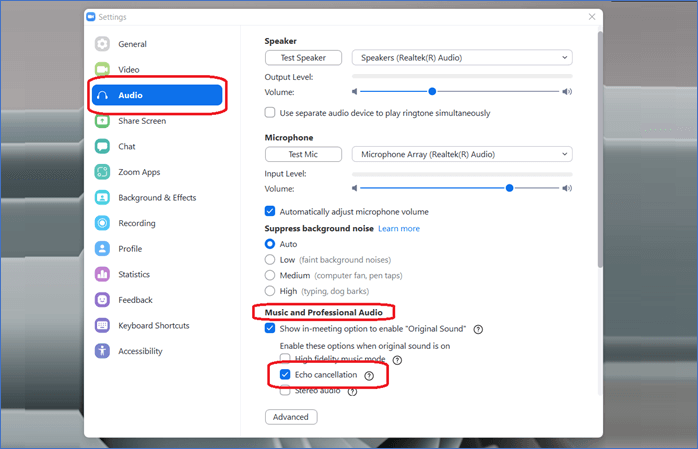
While this method will mainly remove echo from audio, it'll also help you get rid of general background noise. This option is easily enabled once you're in a meeting by turning the "Original Sound" option off. We'll show you how to do that in a while.
Suppress Background Noise on Zoom on iPhone/iPad
If you're an iPhone or iPad user, it's pretty simple to trigger noise cancellation in Zoom. Much like the PC/Mac counterpart, you need to turn the Original Sound option off. This will ensure you are using the built-in noise cancellation feature on the iOS version of the app.
Here's how to use it:
Step 1. Open the Zoom app on your iPhone or iPad.
Step 2. Now, head into the "Settings" section by tapping on the gear icon on the bottom right.
Step 3. Then, find and tap on the "Meetings" option to open further settings.

Step 4. Find the option of "Use Original Audio" and turn it off.

Once done, the Zoom noise cancellation will work in every call that you're in. If you wish to turn it off again, go through the same steps and turn the "Use Original Audio" option off.
Fix Zoom Noise Cancellation Not Working
If you're running into the use of Zoom noise cancellation not working, then fret not. This problem can be fixed easily by simply turning on a few options in the Zoom settings. This usually happens because the option is just not turned on in the relevant section.
Here's how to fix this issue by simply enabling the correct option:
Step 1. Open Zoom and head into "Settings" and then "Audio" options.
Step 2. Under the "Music and Professional Audio," notice the "Enable these options when original sound is on" option. If it's not, the options won't be clickable.
Step 3. Now tap the "Show in-meeting option to enable the "Original Sound" checkbox.

Step 4. In the meeting, turn on the "Original Sound: On" to "Off."

Once done, you shall see the "Original Sound" option again in Zoom Calls. From there, remember that "Off" means noise cancellation is on.
If you found this article helpful, then share it with your friends and anyone who needs help with Zoom noise cancellation.
Remove Audio/Video Background Noise Online
If you're looking for another way to remove background noise from audio, then you need EaseUS Online Speed Changer. It's widely renowned as one of the best MP3 voice removers, but it has many other capabilities as well. The AI-supported tool can remove background noise from MP3 and MP4 files without losing quality or file duration limitations. It also supports WAV, MKV, MOV, M4A, FLAC, AC3, M4B, M4R, MKA, etc.
If you want to know how to remove background noise from audio online for free, then this is the tool you should be using. Here's what it can do:
- Enhance the quality or speed of an audio file through noise reduction;
- Remove vocals or music from an audio/video file;
- Extract instruments (piano, drums, and bass) from songs;
- Alongside pitch changer and Key BPM Finder.
Besides that, it can also be used as an MP3 volume booster. Here's how you can use it:
Step 1. Visit the website and select the "Noise Reducer" option.
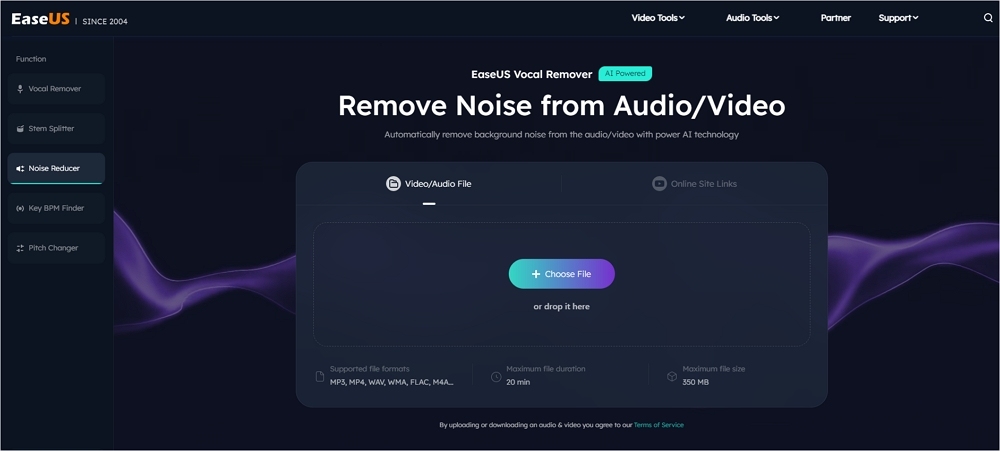
Step 2. Click "Choose File" or drag and drop the file in the area and wait for the AI analysis.
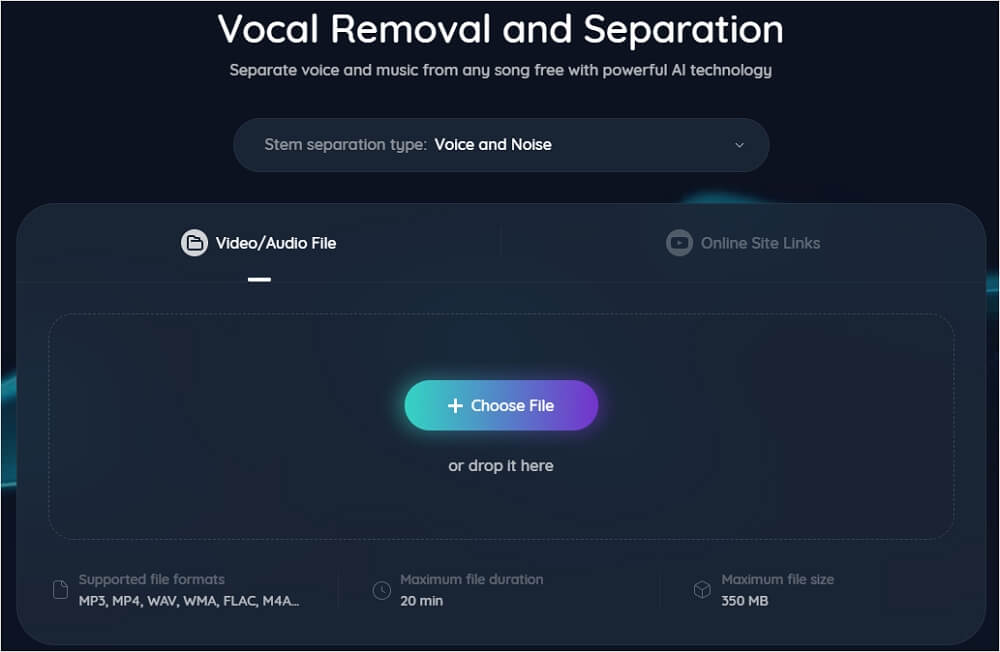
Step 3. Download the final work with noise removed.

Final Words
These are some of the steps to get Zoom noise cancellation up and running again. It requires you to turn on the suitable options and enable the Original Sound option in Zoom meetings. Once you have it back, you can turn it off to get your noise cancellation going.
However, if you're looking for a more straightforward online solution for audio files, then we recommend EaseUS Online Noise Remover. As shown in the demonstration, it has the capability to reduce noise in audio files immensely.
FAQs About Zoom Noise Cancellation
Here are some additional questions regarding Zoom noise cancellation. So, let's answer them.
1. How good is Zoom noise cancellation?
The adjustability of Zoom noise cancellation makes it quite suitable for users with noisy backgrounds. So, if someone has children or lives in a noisy neighborhood, Zoom's noise cancellation can be a blessing, as it prevents unnecessary disturbance.
2. How to remove background noise in the meeting?
Under the Settings option, find Audio and then head into the Zoom Optimized Audio option. From there, you can turn Background Noise Suppression on or off quite quickly. Now, when you're on a call, simply tap on the "Original Sound: On" to "Original Sound: Off" to toggle noise cancellation.
3. How do I stop Zoom from making noise when I join?
You'll have to head into the Zoom.us account or go to settings after logging in. Then, head into the "Meeting" tab and click on the "In Meeting (Basic)" option. Now scroll and find the "Sound notification when someone joins or leaves" and turn it off.
H3: 4. How do I stop hearing myself on Zoom?
Usually, this happens because of Windows settings rather than Zoom settings. So, head into Windows Sound Settings > Device Properties > Headset/Microphone Properties > Listen > turn off the "Listen to this device" option.

